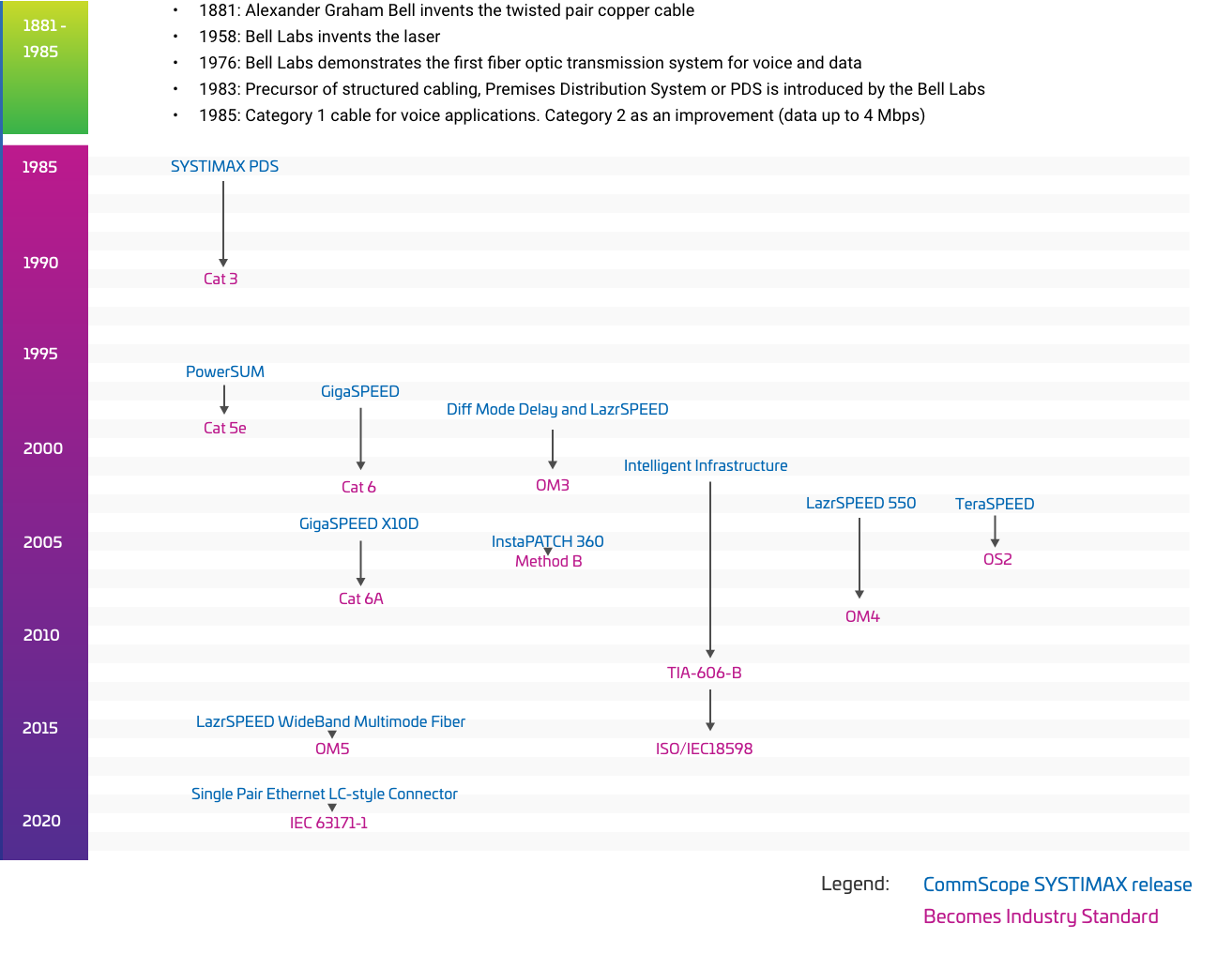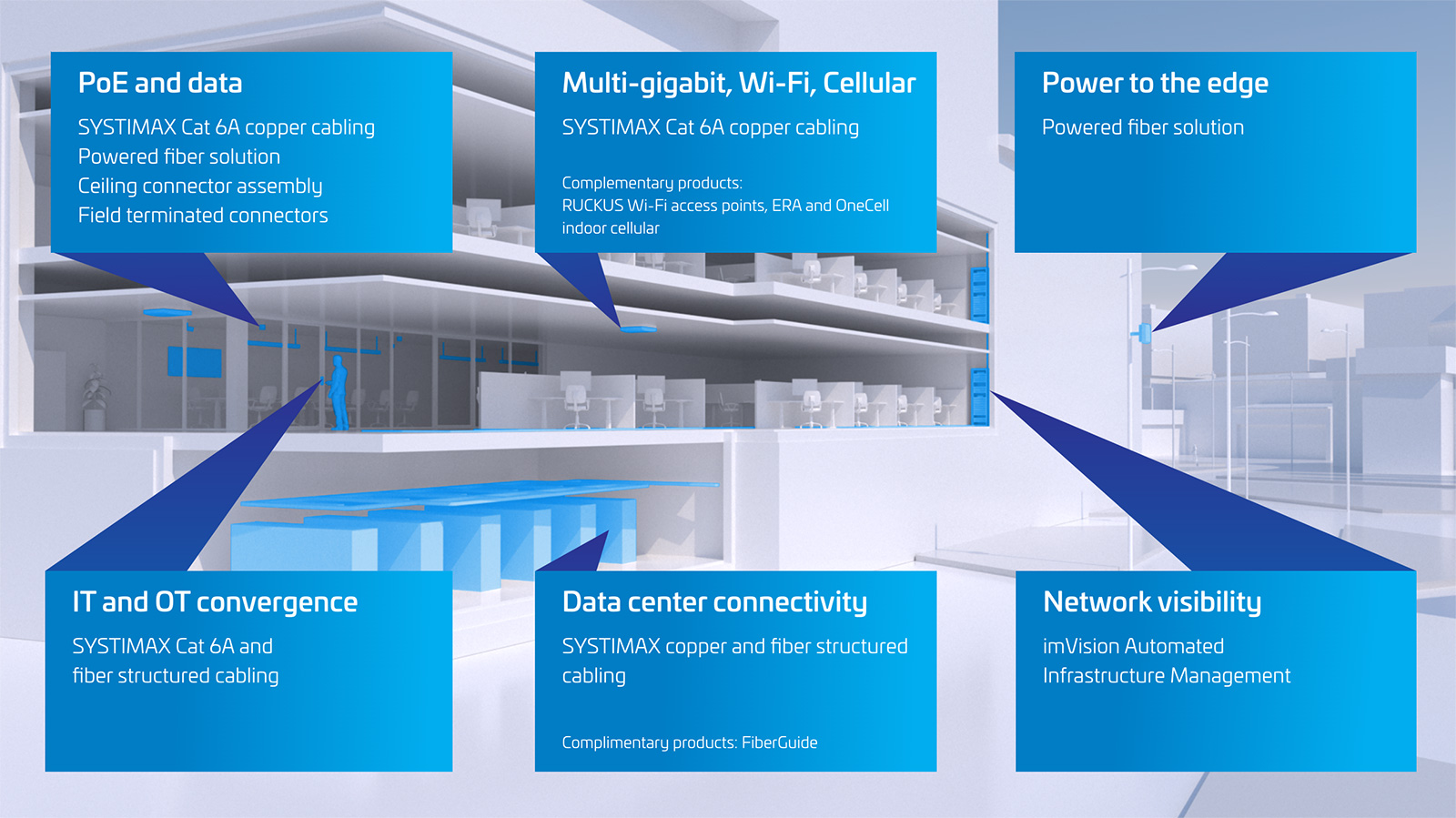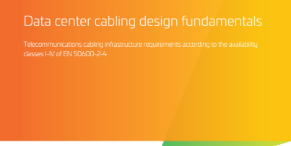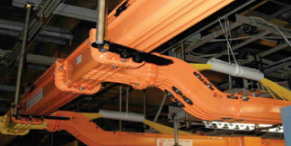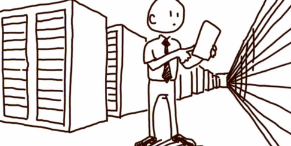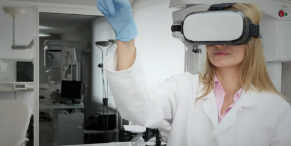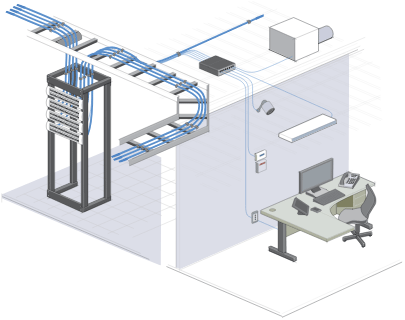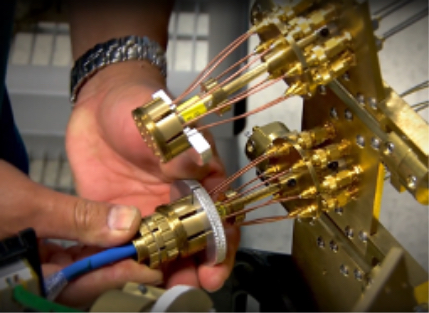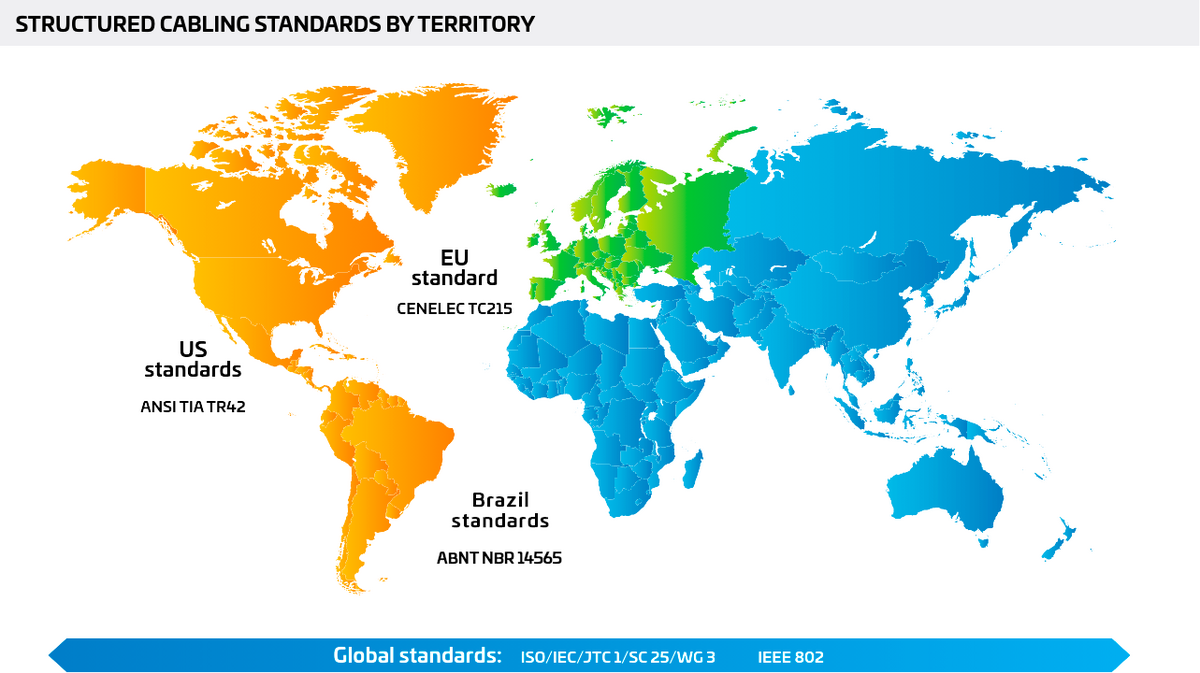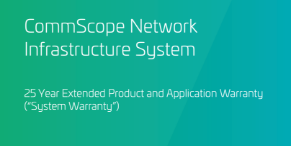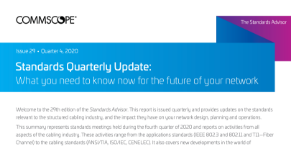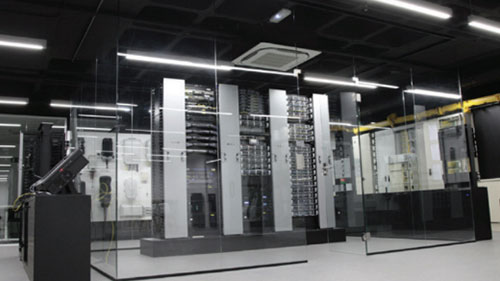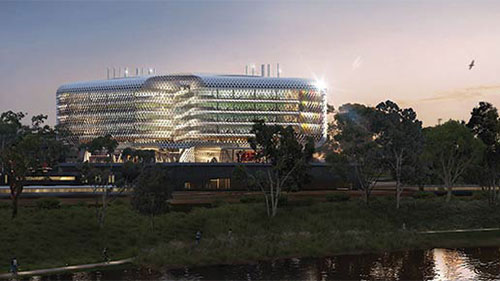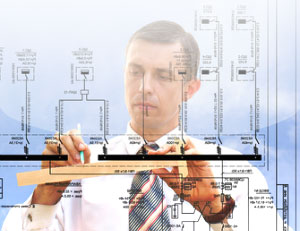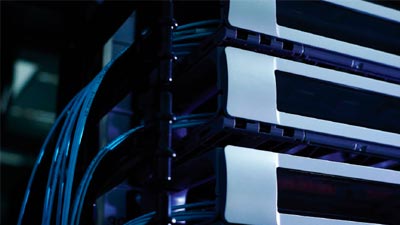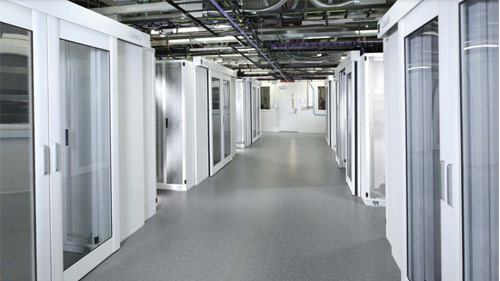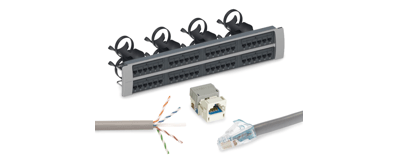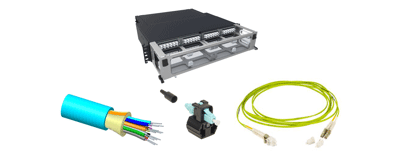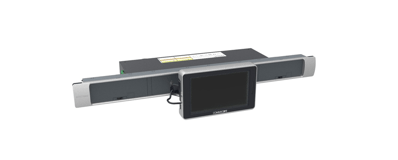Structured Cabling Systems: the Fact File
SCS: Structured cabling systems—or how Ethernet cabling dominated the world
Imagine getting a new desk lamp for your home office. You are anxious to try it out but, instead of simply plugging it into a nearby power outlet, you have to run an extension cord all the way down to the basement to the breaker panel. And then you have to do the same thing for a new printer or any other device requiring power.
Early IT/OT networks were connected much the same way—with patch cords—before structured cabling and its complementary standards were developed. Simply put, structured cabling is a cabling infrastructure that provides an organized approach to cabling that enables simple changes to an IT/OT network.
In addition to fixed connection points, like the fixed power cabling that runs to power outlets, the structured cabling standards define a series of subsystems that facilitate design, installation, operations, and maintenance of IT/OT networks.



Each of the major cabling standards groups—namely ISO/IEC, TIA and CENELEC—established standards for structured cabling in commercial offices, data centers, campuses and more. These standards help specify the types of cabling and components used in these environments, including:
The standardization of connectors, copper and fiber cabling performance categories and design guidelines has greatly simplified the planning and implementation of IT networks.
Often referred to as Ethernet cabling (not an entirely accurate synonym), the structured cabling concept has become so successful that other non-IT applications—such as building automation services, security and high-definition audio-visual—have also incorporated the same concept to ensure that end devices can be upgraded or changed out without having to change out the entire cabling infrastructure.
Things have come a long way since the structured cabling solutions started to take hold in the places we work and live, but their benefits through standardization have made them an integral part of our work and society.
Would you like to read offline?
Download a PDF version of this article to read again later.
Stay informed!
Subscribe to The Enterprise Source and get updates when new articles are posted.
To better understand the benefits that structured cabling systems brought to this industry, we need to properly understand how the premises networks were constructed and deployed prior to the structured cabling concept.
First, there were different network topologies. We will consider just three for the sake of simplicity: bus, ring and star.
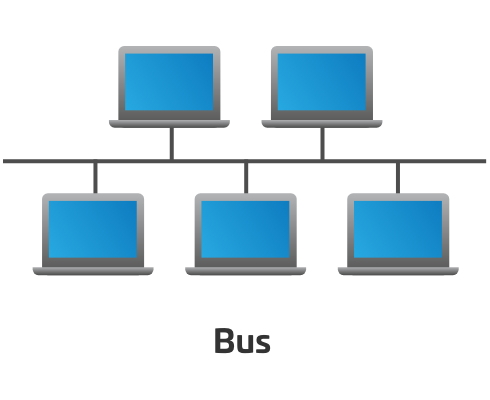
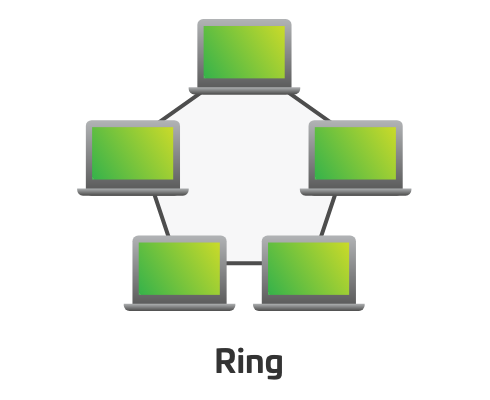
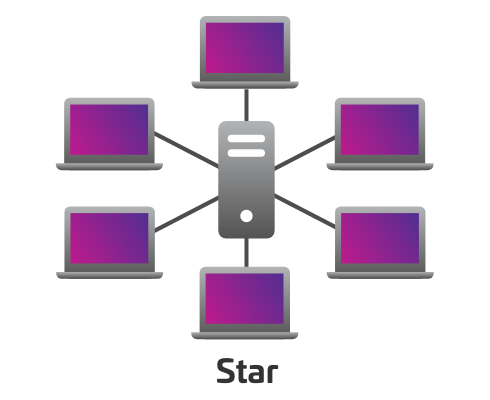
In a bus topology, terminals are connected sequentially at different points of a linear network cable. Even Ethernet was initially supported over a bus network.
The ring topology can be considered a version of the bus topology where the line is closed, forming a loop.
These two topologies seem to make sense when trying to optimize the total length of cable, but imagine how difficult and cumbersome it could be to alter the layout of the network in a real-life building—or simply to add a new terminal.
The physical star topology, though admittedly less efficient in terms of cable runs, is much more flexible and can accommodate the bus and ring networks also.
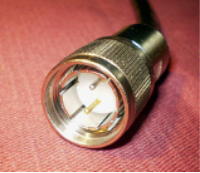
Twinax connector
If several applications coexisted in the same premises, you would see several parallel types of cabling irradiating through your building. The telephones were wired via a specific network, building management systems used a different cabling (one per system) and, as we have seen, computer networks needed their own. A confused approach that prevented efficiency and ease of management.
Structured cabling came to the rescue with a common-sense approach that provided an infrastructure that could support all the aforementioned systems and many more.
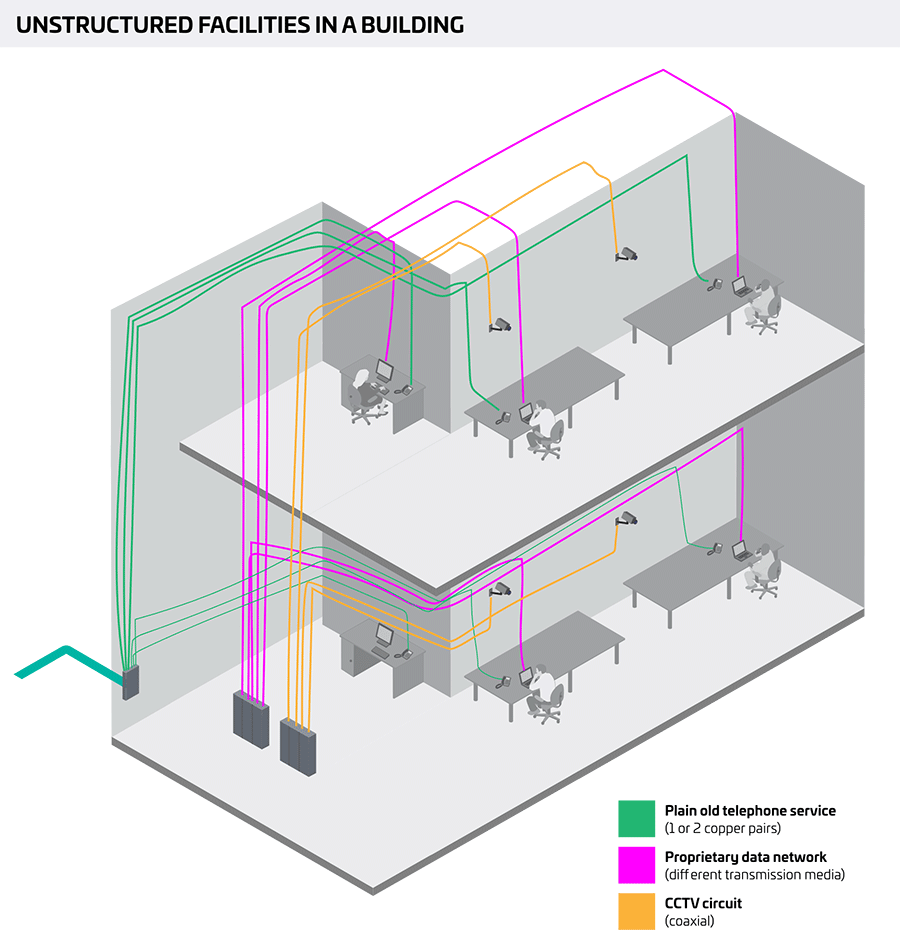
What did structured cabling bring?
SCS is a cohesive way of organizing an infrastructure:
- It uses standardized media and layout for both backbone and horizontal cabling.
- It uses standard connection interfaces for the physical connection of equipment.
- It supports equipment and applications of many vendors—not just a single vendor. The cabling system became independent of the vendor’s equipment and, thus, more flexible. This is also known as “open architecture.”
- It has a consistent and uniform design. It follows a system plan and basic design principles.
- It is designed and installed as a total system, removing the need to install cabling on an as-needed basis.
Structured cabling systems include all the cables, wire, and associated equipment and apparatus necessary to provide service from the network interface to the information outlet at the work location, or to any communication device within the customer premises.
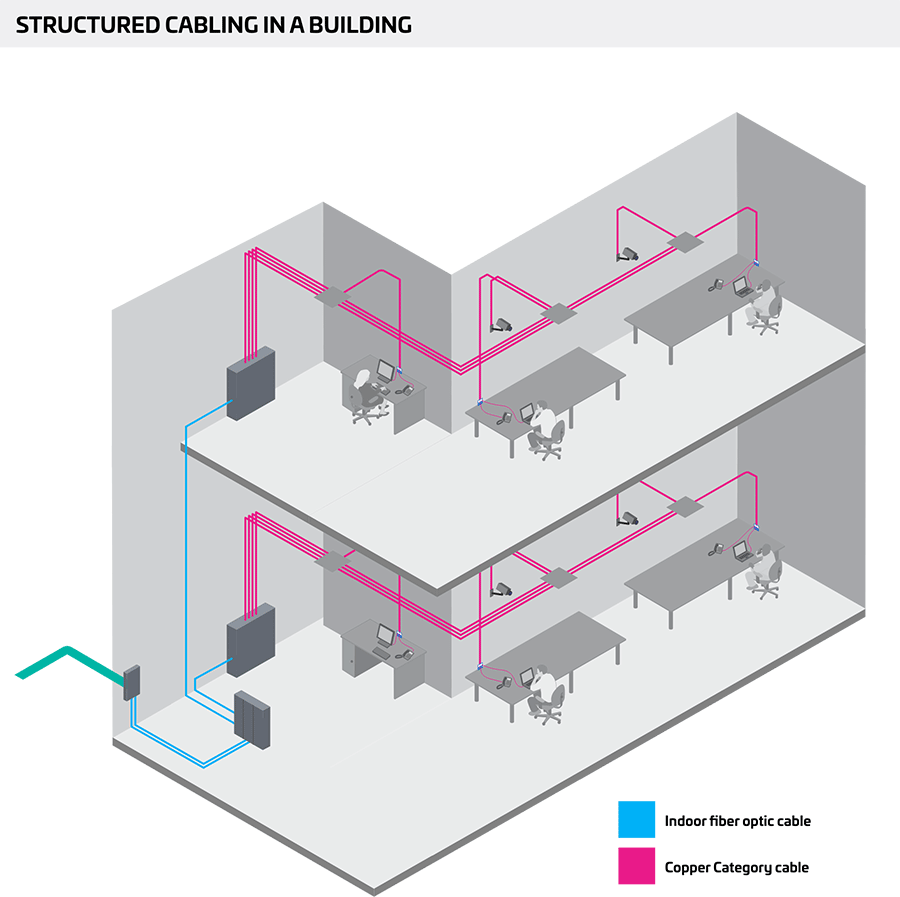
In 1983, Bell Laboratories developed the first structured cabling system, which it called a Premises Distribution System (PDS)—an efficient, controlled architecture providing connectivity for voice, data, video and related applications. It was a star-wired configuration that included all the cables, wire, and associated equipment to provide service from the network interface to communication devices within the customer premises. The PDS typically serves a building or group of buildings, but does not include the telephone PBX (private branch exchange) or the equipment connected to the PDS.
Rebranded as SYSTIMAX® SCS in 1989, it became known as a single, modular, integrated system to support data, voice, graphics, and video communications—across both copper and fiber. The SYSTIMAX division was divested by AT&T into Lucent Technologies, then divested further into Avaya, and ultimately acquired by CommScope in 2004.
PDS and SYSTIMAX SCS were the first systematic approach to communications cabling in a building, enabling the early Ethernet LANs with Category 3 cable, and has since evolved to support today’s ultra-high speeds and complex network architectures for the intelligent building, the campus, and the data center.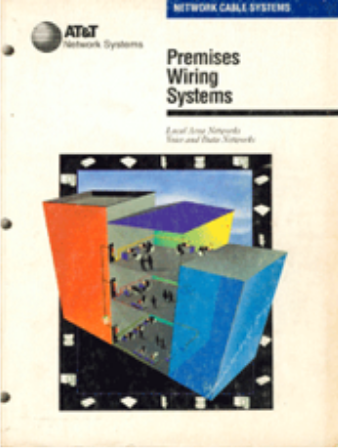
A structured cabling system unifies different connectivity systems, including the following:
Wired
- Four-pair Ethernet cabling
- Single-pair Ethernet cabling—the new standard for IoT and BAS (building automation system) cabling
- Power cabling via PoE or other dc power solutions to support network devices
- Legacy building/OT/AV and security cabling
- Fiber cabling
Wireless
- Cellular wireless: for public safety (3G, 4G LTE and 5G)
- CBRS private cellular network: public licensed and private unlicensed versions
- Wi-Fi
- Li-Fi
- Short-range wireless
- LPWAN- NB-IoT, LoRa, Sigfox and LTE-M
The complete structured connectivity solution can be divided into six discrete subsystems. Each subsystem provides modularity and flexibility; changes and rearrangements usually take place in just two of the subsystems. Configurations for different types of connectivity, for new applications or for new standards, may also involve just a few subsystems. When linked, the following six subsystems provide a complete, integrated connectivity system:
-
Work area subsystem
-
Horizontal subsystem
-
Backbone (riser) subsystem
-
Equipment subsystem
-
Campus backbone subsystem
-
Administration subsystem
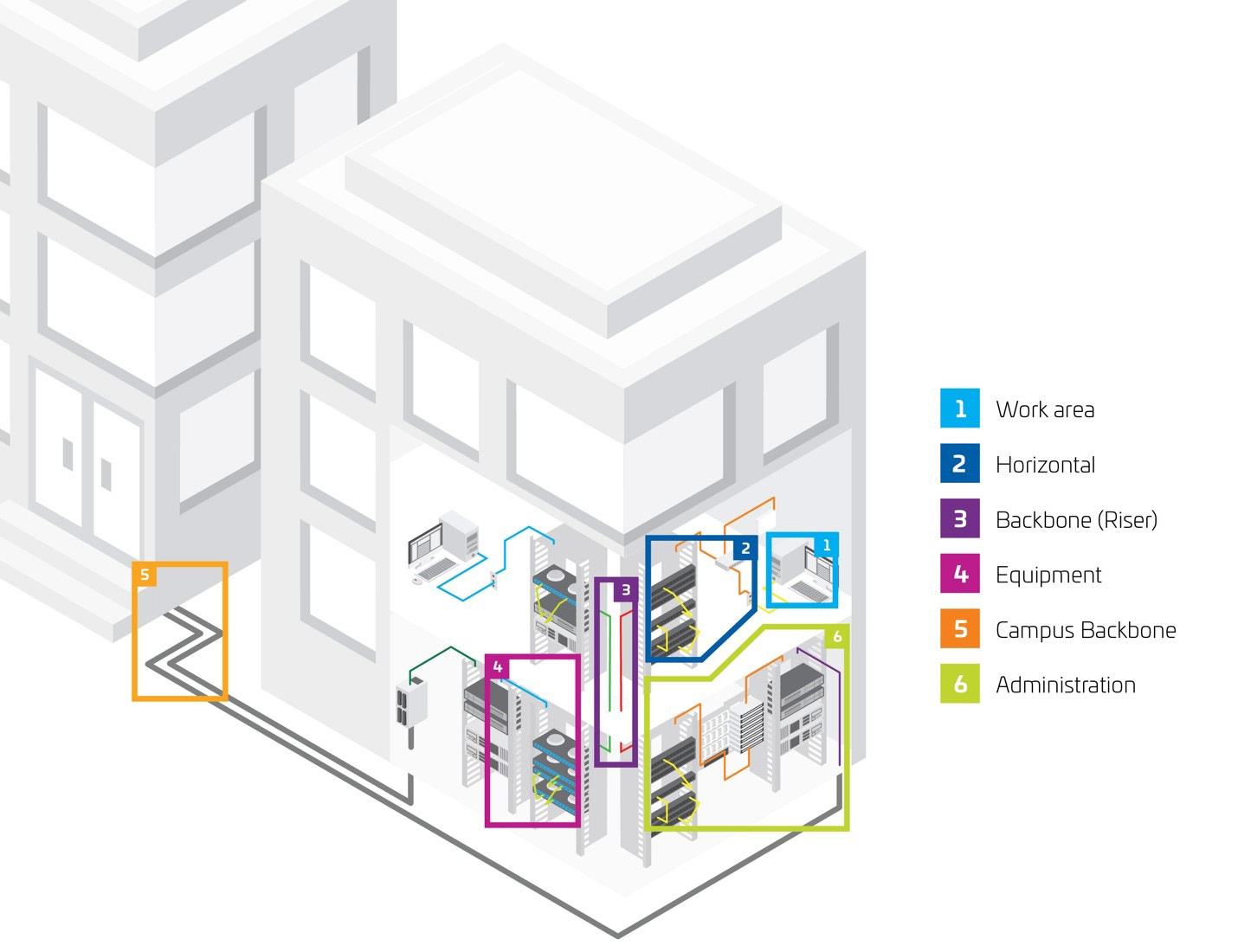
Designing a structured cabling system is a complex, expert task, for which specific training courses are recommended (such as CommScope’s own training modules) but there are a few fundamental principles of design that broadly apply to most structured cabling installations:
- IT rooms should generally be big enough to accommodate racks for cabling and equipment, with space for growth, and be equipped with the right facilities such as security, lighting, HVAC, etc.
- The backbone/riser between telecom rooms should be properly dimensioned, with space to accommodate growth. It’s very common to use fiber on the backbone to ensure the support of high-speed future applications or to create links over 90 meters.
- All copper outlets should be at a cable length of 90 m or less from the telecom closet
- Information outlets should typically be available in all the possible rooms. Even a storeroom may be converted in the future into an office; and, since you don’t want to rewire because of that, it’s advisable to install information outlets in such spaces as well—as you would do with the power outlets.
- All copper elements should be of the same category, given that the system performance will be matched with the lowest category element.
Use the interactive diagram below to find out more about the different applications and connectivity products used in a modern connected building.
Intelligent buildings bear that label for more than one reason. On a literal level, the networked connectivity between a building’s systems makes it possible for the enterprise within to automatically regulate security, environmental conditions, lighting, communications, and other factors—helping maintain a welcoming atmosphere conducive to the work performed there. These networks of systems have become more critical to the efficiency, effectiveness, and economy of an enterprise’s operations. Using a broader definition, intelligent buildings are also an effective means for an enterprise to increase efficiency, reduce costs and streamline operations. This is a “smart” approach to reducing operational expenses and facilitating a flexible growth model.
As enterprises embrace the efficiencies of intelligent buildings, three key needs are emerging:
- The need for mobile connectivity within the enterprise, as fewer employees are bound to desks but need ubiquitous wireless coverage
- The need to lay a future-ready infrastructure foundation for the still-evolving, ever-growing internet of things (IoT)
- The need to converge many disparate or proprietary networks onto a single, unified IP over Ethernet physical network layer
Learn more about smart buildings in our ebook: Smart building connectivity
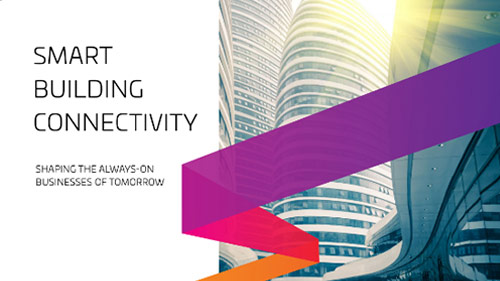
Smart building connectivity eBook
The intelligence of today’s smart buildings is in the integrated communications infrastructure that powers and connects. Learn the strategies and best practices of creating the network infrastructure needed to realize your smart building’s potential.
As we see exponential growth in connected devices, wireless technologies and the internet of things (IoT), campus networks are forced to grow and evolve to keep up with the demand. Today’s campus networks need to be able to quickly ramp up to speeds as fast as 40 Gbps, 100 Gbps and beyond to stay ahead of these technological advancements.
A campus relies on indoor and outdoor backbones to transfer data in and out of buildings and connect all who live, work or educate inside.
At CommScope, we believe it is preferable today to use fiber, copper and wireless infrastructure seamlessly together to create a system that is structured enough to bring efficiency and reliability, but which is also flexible enough to grow and adapt with changing demands in the future. The elements of a campus network are illustrated in the interactive diagram below:

Data centers are one of the most complex network environments where a structured cabling approach can be most helpful—or even indispensable. Given the many pieces of active equipment that need to be interconnected, a point-to-point methodology for linking those elements could quickly become unmanageable.
Data center cabling standards provide more detail around the physical media and define the channel that supports the applications. There are three main cabling standard bodies: TIA, EN and ISO.
Each of these groups has a general standard that defines structured cabling, as well as a standard specifically for data center applications to reflect the need for higher speeds, increased density and an array of architectures. While there are differences between these standards, there is agreement around the minimum recommended cabling categories and connector types.
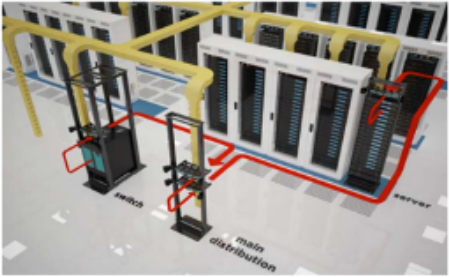
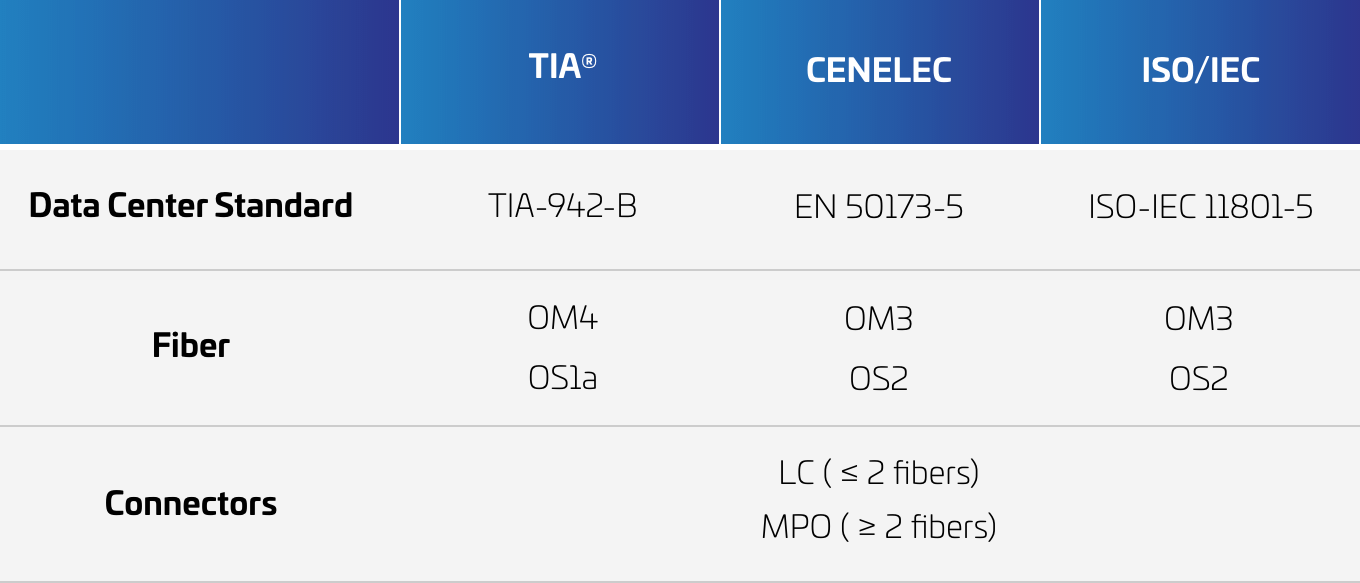
In addition to EN50173-5, CENELEC has developed the EN 50600-2-4 standard “Telecommunication Cabling Infrastructure.” It focuses primarily on design requirements for the different DC availability classes with strong emphasis on migration and growth.
Fiber pathways
Since the data center may need thousands of fiber connections between the different areas, it’s important to properly route all those fiber cables.
Fiber raceway systems have revolutionized the protection and routing of fiber. The main objectives are to gain flexibility, reduce the installation time and maintain the proper fiber bend radius.
The typical requirements for such a raceway would be:
- All components to provide maximum fiber protection
- Maintain a minimum of 2-inch bend radius throughout
- To offer a wide variety of components for system flexibility
- Scalability—ideally to support systems of 400 to 25,000 patch cords
- Not all data centers are equal, so a variety of sizes is desirable: 2x2, 2x6, 4x4, 4x6, 4x12, 4x24
- Variety of exit styles and sizes
- Vertical and on-demand fiber management systems
- Availability of a configuration tool that allows users to import layouts into a web-based tool, design desired raceways in a 3D format, and export detailed drawings and BOMs used for easy installation and ordering
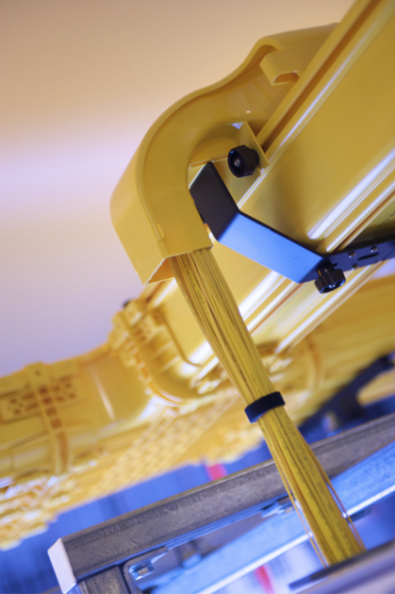
For further information on data center cabling:
Video: Point-to-Point versus Structured Cabling: Which Option is Best for You?
Video: High Speed Migration – Bandwidth without boundaries
With the Ethernet’s overwhelming success in the networking world, power over Ethernet (PoE) has emerged as a preferred technology for delivering remote power to connected devices.
As more networked devices—such as IP security cameras, Wi-Fi access points, in-building wireless, building management systems, and LED lighting—begin using remote powering, the opportunity to save on infrastructure costs by powering them over existing structured cabling continues to grow.
To ensure consistent PoE performance, in 2003 the Institute of Electrical and Electronics Engineers (IEEE) set a standard2 of 15.4 watts to be supplied from the power source. Today, as enterprises demand more from PoE technology, work was completed to create a new standard (IEEE 802.3bt) that supplies up to 90 watts from the power source. This standard, also referred to as 4-Pair PoE or simply 4PPoE, enables the remote powering of a broader range of connected devices. It will also increase the effects of cable heating as power is dissipated from bundled cabling.
Useful references:
- TIA TSB 184-A Guidelines for Supporting Power Delivery Over Balanced Twisted-Pair Cabling
- ISO/IEC TS 29125 Information Technology—Telecommunications cabling requirements for remote powering of terminal equipment
- CENELEC CLC/TR 50174-99-1 Information technology—Cabling installation—Part 99-1: Remote powering
- NEC NFPA 70 Code
- TIA 569.D-2 Additional pathway and space considerations for supporting remote powering over balanced twisted-pair cabling
- ISO/IEC 14763-2 revision including remote power planning and installation is in development
Typical cabling topology
Useful resources:
2 IEEE 802.3af-2003
Network infrastructure, specifically cabling, is often not publicly recognized for its value because it remains hidden: out of sight, out of mind and out of the way. Most industry talk today is of wireless (either in-building cellular or Wi-Fi) and its increasing ubiquity. By its very name, wireless suggests “using less wire.” But the main advantage of wireless is not to save money by replacing wire. There is still a lot of wire in wireless.
In fact, there will be a need to “wire more to wireless,” as wireless networks transform to smaller and smaller cells to achieve the capacity and coverage users and devices require. And, with the much-heralded advent of the internet of things, the number of connections required is only expected to increase.
Regardless of the talk of a future wireless world, such a place would presumably still be highly dependent on a network infrastructure based on cables, albeit a large part of it probably being optical fiber rather than wire. As such, all infrastructure considerations must begin with a structured approach to cabling. Structured cabling is the accepted way of dealing with the proliferation of interlinked electronic devices. Because a single type of copper and/or optical fiber cable is able to meet a variety of communications needs, the wide adoption of structured cabling will continue as applications expand from voice, data and video to include building automation systems, security systems and other control networks. However, different cabling types have restrictions on their applications and specific capabilities. Design teams will need to evaluate the choice carefully with the building use and longevity in mind.
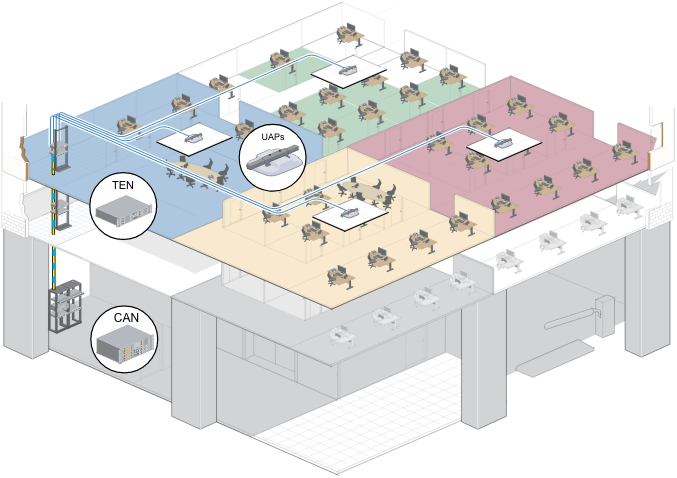
Hopefully, very few building developers today would dream of specifying a new office without adequate vertical ducts, generous floor-to-ceiling heights or access floors. Also, simpler design strategies for rehabilitating older buildings are becoming routine. Designers are finding ways to achieve simpler, cheaper and neater architectural solutions to problems associated with accommodating networks. Also, it is now far more common for clients, IT specialists, facilities managers, and all the many and varied members of building design teams to “be on same page” during the design and building process.
Presumably, the process of diffusing networks throughout organizations is not—nor ever will be—complete. Wherever, whenever and however connections arrive, there always will be some trouble and change associated with the novelties. There is no doubt, however, that most organizations are nowadays increasingly dependent on communication networks and, therefore, the relationship between networks and building design is viewed as simply far too important to the survival of many organizations ever to be forgotten or ignored.
Find out more about the importance of wired infrastructure behind wireless in our fact file on in-building cellular networks.
In the 1990s, local area networks (LANs) were booming, but future application demands were driving the need for more bandwidth than Category 5e copper twisted-pair systems could provide. Crosstalk in the ubiquitous RJ45 modular connector was a key electrical impairment that held back increases in usable bandwidth. The development of Category 6 connectors, matched with complementary Category 6 cables and cords, solved this problem.
Additionally, in 1997, SYSTIMAX introduced improved twisted-pair connectors which incorporated breakthrough technology called multi-stage compensation. This new compensation technique enabled connectors with drastically reduced crosstalk levels that, when coupled with improved cables and cords, doubled the usable bandwidth of the cabling system. The structured cabling industry later standardized these improved levels of performance as Category 6, Class E systems in U.S., European, and international standards.
Key to the breakthrough was placing multiple stages of compensating crosstalk in precisely controlled locations to substantially overcome the negative impact of offending crosstalk. These further enhancements led to even higher performance levels introduced to the market in 2004 and later standardized by the industry as Category 6A, Class EA. CommScope obtained patents on the noted compensation methods and lead frame designs.
Multi-stage compensation facilitated the realization of Category 6A cabling, and a whole family of related patents on compensation methods, jack design and lead frames arose from this initial innovation. To enable industry growth, CommScope licensed its patented technology to others in the industry.
Category 6 systems enabled modern LANs with robust support for network speeds of 1 Gbps. Category 6A systems enabled 10 times that speed—up to 10 Gbps. Category 6 and Category 6A are the most commonly used cabling solutions in the market today.

SYSTIMAX Interactive
Whether it is network convergence, power and data, IoT or other applications, SYSTIMAX can help you address your toughest challenges—today and tomorrow.
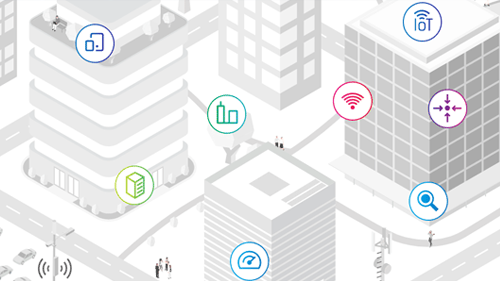
- Find out more about copper cabling technology
- Find out more about fiber cabling technology
To get the best use from SCSs, standards need to be ratified and observed. The IT industry has recognized the important role structured cabling provides and has developed standards that encompass the capabilities and functions of these solutions, including the following.
In the telecom, intelligent building and cabling industries, standards development organizations demonstrate considerable cooperation by providing viable solutions for growing communication needs. There are always numerous new and updated standards in development. For example, the International Organization for Standardization (ISO) and International Electrotechnical Commission (IEC) recently published the first international standard for automated infrastructure management (AIM).
CommScope is very active in standards organizations and currently has employees chairing committees, providing technical expertise, and helping progress standards to successful publication and deployment. Several CommScope associates have even been recognized with awards for their service to the IEC, Institute of Electrical and Electronics Engineers (IEEE) and Telecommunications Industry Association (TIA). It is important for our customers that we stay on the cutting edge of network technology evolution.
In the Connected and efficient buildings e-book, CommScope gives an overview of the organizations most involved in cabling and connectivity standards for intelligent buildings.
US
ANSI TIA TR42
ANSI TIA TR42 was the first organizations to establish a “hierarchical star” wired networking topology in the TIA-568 standard for buildings back in 1990, creating a unified network topology to support voice, data, and video communications over the same network. Since then TIA TR42 has continued to be the leading forum to create a wide range of related standards including TIA-569 for pathways and spaces, TIA-606 for administration, TIA-607 for bonding and grounding, and TIA-5017 for physical network security.
ABNT NBR
CE 003:046.005
In Brazil, structured cabling standards, as well as other related standards, are prepared by the Executive Committee (CE 003:046.005) associated with COBEI (Brazilian Committee for Electricity Electronic Lighting), composed in a heterogeneous way by professionals from different segments and including manufacturers, designers , integrators/installers and end users. The Brazilian standard ABNT NBR 14565 has the scope to specify “a structured cabling system for use on the premises of a single building or a set of commercial buildings on a campus.
Global
IEEE 802
IEEE 802 is responsible for standards related to copper and fiber “Ethernet” applications ranging from 10 Mb/s to 400 Gb/s. These standards help enable the exponential growth of data traffic across different elements of communications networks in enterprises, data centers and metropolitan areas—touching most aspects of the way we work, play and live.
ISO/IEC
ISO/IEC/JTC 1/SC 25/WG 3 and Related IEC Component Committees are active in developing cabling standards that support the IEEE 802 networking applications. This committee created the “structured cabling” paradigm that enabled many different applications to work over the same cabling topology and media types.
Europe
CENELEC TC215
CENELEC TC215 standards generally follow the ISO WG3 standards and are widely adopted in most European Union (EU) countries and beyond. CENELEC has played a leading role in development of cabling requirements in support of remote powering applications such as Power over Ethernet (PoE).
CommScope’s SYSTIMAX solution meets or exceeds the above standards.
Embracing the digitalization of the enterprise is a competitive imperative nowadays. Modern applications are evolving quickly to take advantage of a wide array of services and new technologies that provide quicker time to value for new applications, and scale and scope with the goal to serve your customers whenever and wherever they connect with your business. New design tools are required to speed the design and planning phase—and to keep pace with the capacity and performance demands while delivering optimal infrastructure ROI.
To address challenges such as these, CommScope offers a suite of tools that can simplify the design, deployment and ongoing expansion to support the high-speed migration of fiber connectivity. For example, the SYSTIMAX® Performance Specifications define channel topology limits specific to SYSTIMAX cabling solutions for a wide range of applications. Additionally, the SYSTIMAX Fiber Performance Calculator provides the attenuation calculations for a proposed cabling channel while simultaneously determining which applications the channel will support. CommScope stands behind the Performance Specifications (available on the CommScope website) and the Fiber Performance Calculator analysis with warranty* assurance for all the supported applications. Not only do the above tools allow rapid design exploration, they form the basis of our unique SYSTIMAX Application Assurance. Under the terms of CommScope’s 25 Year Extended Product Warranty and Application Assurance, CommScope guarantees the cabling will meet specification and that the applications will operate in accordance with the Performance Specifications—in many cases, beyond the distances and channel complexities specified in the standards. The System Warranty provides the details of the terms and conditions of our Application Assurance.
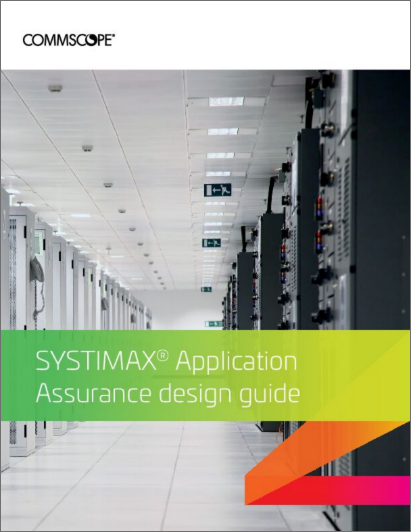
See our application guide below for an overview of these tools, along with practical examples that illustrate how they can be used to plan application performance over a specified channel using SYSTIMAX fiber cabling. The result is verified application support, validated installation performance and an end-to-end Application Assurance backed by CommScope and its extensive PartnerPro® Network of certified installation partners.
The benefits of using a structured network infrastructure include lower material and labor costs, a single installation force for cabling, a single point of contact for systems integration, reduction in physical space requirements, lower relocation expenses, reduced maintenance and administration costs, and the ability to migrate to new technologies with greater ease, less risk and lower costs.
The ideal structured network infrastructure is not just the use of particular category of cabling product (Category 5e, 6, 6A, etc.) in the building. In fact, an infrastructure could have a mixture of twisted-pair and fiber-optic cabling, but also important is the design, installation and ongoing management. The concept is to wire once.
The extra material cost and labor expense incurred in implementing a true structured network infrastructure is minimal compared to the higher labor expense involved in upgrading and re-cabling at a later date.
Today, energy conservation is a global priority. Increased energy consumption and oil prices lead to increases in the price of electricity, too. Government programs are being instituted and laws enacted to improve the energy efficiency of buildings. While fuel prices continue to fluctuate, there is a worldwide quest for protection of the environment and conservation of energy, as well as a demand for healthy work environment and the need to minimize expense during difficult economic times. With a true structured network infrastructure, the convergence of telephones, computers, wireless devices and building management controls onto one centralized IP network is enabled as the technology evolves, as well as improving the building’s carbon footprint. The structured network infrastructure becomes the “fourth utility” of a building.
The key to designing a proper network is early planning, long-term thinking and avoiding “living for today” investment, which is as applicable to IT as it is in all walks of life.
The world of business and technology is continuously evolving. All network managers have to connect more people using more devices than ever before—which means there would be a need for constantly developing the power and capacity of the networking infrastructure we use.
Delivering network performance is one thing, but managing the associated physical layer is an enormous challenge because modern networks are increasingly complex. Heavily meshed leaf-spine architecture and point-to-multipoint connections make the orderly management and supervision of these networks difficult.
There are other challenges, too, with space increasingly at a premium—leading to higher densities of ports on shelves and an increase in the chance of human error. Lean IT teams often benefit from sophisticated management platforms such as AIM
The standardized network management technology that has come to the rescue is known as AIM (automated infrastructure management). By automating the detection, supervision and management of all connections across the network—both fiber and copper, and regardless of location—enterprises are able not only to keep track of devices but to optimize the network to squeeze the best possible performance and deliver the best possible IT experience to enterprise users.
Find out more about AIM in our AIM fact file.
SYSTIMAX created the SCS concept 40 years ago and has led the market since then
Breakthrough solutions that become mainstream years later
Guaranteed performance in line with CommScope’s warranties—always exceeding standards specifications
End-to-end solution
Trained and qualified technical support in 150 countries
SYSTIMAX solutions precede the standards and set the footprint
PartnerPro Network: hundreds of trained and qualified companies with expertise on SCS design and deployment
A warranty to rely upon—covering not just products but applications

Video: SYSTIMAX brand essence
Experience the power and promise of the SYSTIMAX brand for modern communications networks.
Structured cabling systems ordering guides
Download the ordering guide for your region:
SYSTIMAX: North America | Europe, Middle East & Africa | Asia Pacific | Caribbean & Latin America
NETCONNECT: Europe, Middle East & Africa | Asia Pacific | Caribbean & Latin America
Uniprise: North America
Cabling calculators
Cabling Pathways Calculator
This web tool provides an easy way to estimate how many cables would fit into a raceway or conduit, given a fill percentage. Users can select cable, trunks, raceways and conduits from predefined lists or define their own.
The benefit of structure: remembering life before SCS
We consider the many benefits brought by the shift away from multi-cable chaos to a more structured approach.

